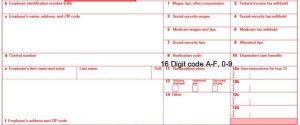 In case you hadn’t heard Congress is working on a tax bill! Yes, a bit snarky there. But this new tax bill does have a direct effect on payroll, especially our year end and year beginning updates. Normally by now we would have received the Notice that gives us the 2018 tax charts, the Form W-4 would have been finalized etc. But we were notified in the monthly IRS payroll industry phone conference call, on Thursday Dec. 7, that these items are on hold until the tax bill is passed or abandoned. Now since it is unlikely this bill will just be abandoned, the massive changes to tax charts, taxing of fringe benefits etc. is going to require extensive updates for the IRS to incorporate. So even if the bill is effective January 1, 2018, which it is indicated to be, don’t expect the new charts immediately. The IRS needs time to “review and implement” the required changes. So what will probably happen is that we will have an “implementation period” as we did in 2009, when new tax legislation was passed. Employers will continue to use the 2017 charts and guidance until the info is received. This may pose a problem as many of the fringe benefits that we currently offer such as transportation passes, educational assistance and relocation may have tax status changes from nontaxable to taxable. So be sure to track these payments or benefits so they can properly taxed if need be when the final bill is implemented.
In case you hadn’t heard Congress is working on a tax bill! Yes, a bit snarky there. But this new tax bill does have a direct effect on payroll, especially our year end and year beginning updates. Normally by now we would have received the Notice that gives us the 2018 tax charts, the Form W-4 would have been finalized etc. But we were notified in the monthly IRS payroll industry phone conference call, on Thursday Dec. 7, that these items are on hold until the tax bill is passed or abandoned. Now since it is unlikely this bill will just be abandoned, the massive changes to tax charts, taxing of fringe benefits etc. is going to require extensive updates for the IRS to incorporate. So even if the bill is effective January 1, 2018, which it is indicated to be, don’t expect the new charts immediately. The IRS needs time to “review and implement” the required changes. So what will probably happen is that we will have an “implementation period” as we did in 2009, when new tax legislation was passed. Employers will continue to use the 2017 charts and guidance until the info is received. This may pose a problem as many of the fringe benefits that we currently offer such as transportation passes, educational assistance and relocation may have tax status changes from nontaxable to taxable. So be sure to track these payments or benefits so they can properly taxed if need be when the final bill is implemented.
W-2 Verification Code Program is Expanding in 2017
I attended the October 5th payroll industry telephone conference call. On the call Scott Mezistrano, with the IRS Industry Stakeholder Engagement and Strategy, provided the listeners with updated information on the W-2 Verification Code Pilot Program for the 2018 filing season (2017 Forms W-2).

First just a quick review of the program itself. It was implemented during the 2016 filing season. Its purpose is to combat tax-related identity theft and tax refund fraud. It requires a 16-character code be input into box 9 so that the tax filer can be verified when filing taxes electronically. It only appears on the Form W-2 copies B (filed with the employee’s federal tax return) and C (the employee’s copy). If the Verification Code (VC) is deemed valid, then the IRS treats the W-2 data submitted with the Form 1040 to be valid, thereby reducing false fraudulently filed tax returns.
For the 2016 Forms W-2 only ADP, Ceridian, Intuit, Paychex, Payroll People, Prime Pay and Ultimate Software participated in the test pilot program. If the taxpayer had a VC it was entered 34% of the time. However, when it was entered, it was validated 97% of the time.
For the 2017 Forms W-2 there will be 10-12 service bureaus or payroll software companies participating in the program. This includes the same companies as in 2016 along with the National Finance Center and a few more payroll service providers. This should result in approximately 66 million Forms W-2 containing the code. That results to about 1 in 4 forms that will be filed.
Not All IRS Guidance is as Good as Gold
 Nina Olson is with the Taxpayer Advocate Service (TAS). This is an independent organization within the IRS that assists taxpayers who are experiencing “troubles” with the IRS in getting issued resolve through the “normal channels”. During recent congressional hearing she was asked what seemed like simple questions concerning the types of IRS guidance taxpayers can rely on. But the answer was not simple. She has written a blog; IRS Frequently Asked Questions Can be a Trap for the Unwary on July 26, 2017, that contains excellent information for those of us who need to research tax questions and rely on tax guidance from the IRS. I recommend reading it to ensure you know what you can and cannot rely on when researching the IRS website for tax guidance.
Nina Olson is with the Taxpayer Advocate Service (TAS). This is an independent organization within the IRS that assists taxpayers who are experiencing “troubles” with the IRS in getting issued resolve through the “normal channels”. During recent congressional hearing she was asked what seemed like simple questions concerning the types of IRS guidance taxpayers can rely on. But the answer was not simple. She has written a blog; IRS Frequently Asked Questions Can be a Trap for the Unwary on July 26, 2017, that contains excellent information for those of us who need to research tax questions and rely on tax guidance from the IRS. I recommend reading it to ensure you know what you can and cannot rely on when researching the IRS website for tax guidance.
Using Fluctuating Workweek? Might Want to Think Again
If you are currently using the fluctuating workweek that is permitted under the Fair Labor Standard Acts (FLSA) you may want to review that decision. The Fifth Circuit Court of Appeals has drawn some limits on that method. Bill Pokorny has done a fantastic blog on discussing this recent court case. Check it out for the latest if you are currently using this type of workweek or just want to increase your current knowledge in this area.
Does Time and A Half Pay Count Towards Overtime?
When conducting my webinars on the FLSA requirements one area always seems confusing to attendees and that is the eight types of payments that can be excluded when calculating regular rate of pay. The one found most often to be confusing to my attendees and maybe to you as well is the one that is for bona fide overtime premiums. Bill Pokorny has done an excellent blog post on this subject that I know you will find helpful on this topic. Please take the time to check it out if you offer this type of payment or to improve your general payroll knowledge.
Disaster Relief for Employees and Employers
With the major disasters befalling us many employers and employees are looking for ways to help or seeking help to recover. The IRS, the states and others are providing relief for these disasters. For example the IRS is permitting pension plan hardship loans and filing extensions. They are also permitting leave sharing programs and leave donations with favorable taxation. Click here for outline of the IRS latest tax relief.
The states are also giving disaster relief. So far Alabama, Colorado, Georgia, Hawaii, Idaho, Illinois and Wisconsin have posted tax filing/payment relief for employers. You need to check the individual website for each state to see who is offering this type of relief.
In addition, Ernest and Young’ Workforce Advisory Services are offering a complimentary webcast tomorrow morning on Disaster Relief: Workforce Considerations for Employers at 9 am pacific/12 noon eastern.
Employer Information Report (EEO-1) Pay Data Collection Blocked
The U.S. Equal Employment Opportunity Commission (EEOC) has been notified by the Office of Management and Budget (OMB) that it is initiating a review and immediate stay of the effectiveness of the pay data collection aspects of the EEO-1 Form that was revised on September 29, 2016, in accordance with with its authority under the Paperwork Reduction Act (PRA).
The previously approved EEO-1 form which collects data on race, ethnicity and gender by occupational category will remain in effect. Employers should plan to comply with the earlier approved EEO-1 (Component 1) by the previously set filing date of March 2018.
Acting Chair Lipnic said:
“The EEOC remains committed to strong enforcement of our federal equal pay laws, a position I have long advocated. Today’s decision will not alter EEOC’s enforcement efforts.
I had consistently urged OMB to make a decision on this matter so that stakeholders would be aware of their reporting obligations.
Going forward, we at the EEOC will review the order and our options. I do hope that this decision will prompt a discussion of other more effective solutions to encourage employers to review their compensation practices to ensure equal pay and close the wage gap. I stand ready to work with Congress, federal agencies, and all stakeholders to achieve that goal.”
My editorial: Is this a good move? I am not sure, but it seems like it will do more to discourage employers from closing the wage gap. So far voluntary “encouragement” to bring compensation practices closer to ensure equal pay has not really worked very well, now has it? Having to actually set down on paper, in a report to the EEOC, exactly what the wage gap is in an employer’s compensation was a good way to shed light on the subject.
Last Round for Now: Obama Era New OT Rules Knocked Out
On August 31st, the Judge in charge of the court case for the new OT rules initiated by President Obama issued its final ruling. Basically he sided with the plaintiffs. For an excellent recap of the ruling I am referring you to Bill Pokorny’s blog.
I Need Your Input: Regular Rate of Pay…Your Payroll System
I recently had a discussion with an associate (also an payroll consultant) about the regular rate of pay and payroll systems in general. Unfortunately the question we both had, we could not fully answer. So I am turning to my blog followers to help me out. When I started in payroll we did payroll by hand, including the regular rate of pay calculations. Of course, systems have improved since 1977. But my question is…which current systems (whether in-house or service bureau) do regular rate of pay calculations? For example, I give a bonus to an employee for finishing a project on time (nondiscretionary bonus) and he earned it in the same week it was paid. For this scenario would your payroll system do the regular rate of pay calculation? Or would you have to do it by hand and add it in? Second example, an employee receives a monthly commission on sales (hourly employee). He is paid his commission on July 15th for the month of June. Would your system be able to recalculate the additional overtime due? Or would you have to do it by hand (Excel spreadsheet)?
If your system does not do the regular rate of pay calculation, did you know this when you bought the system or signed up for the service bureau?
I appreciate any input you might have on the subject. Please include the name of the system if you can do so. Also please note if you had to have a special program written to handle the calculations.
Latest Round on Battle for Exempt Employees
The latest on the salary increase was released today. The U.S. Department of Labor has today announced that it will publish a Request for Information (RFI), Defining and Delimiting the Exemptions for Executive, Administrative, Professional, Outside Sales and Computer Employees. The RFI offers the public the opportunity to provide information that will aid the Department in formulating a proposal to revise these regulations. The RFI solicits feedback on questions related to the salary level test, the duties test, inclusion of non-discretionary bonuses and incentive payments to satisfy a portion of the salary level, the salary test for highly compensated employees, and automatic updating of the salary level tests. The 60-day comment period for all issues raised in the RFI ends on September 25, 2017. The public may submit comments according to the instructions listed in the RFI as published in the Federal Register.
But the court case is still raging on. The DOL has decided to fight the ruling, not to defend the limits set by the Obama administration, but to defend the concept that the DOL has the right to change the salary limit. Lots of legal blogging on the topic so I wanted to include some of those blogs for you today:


